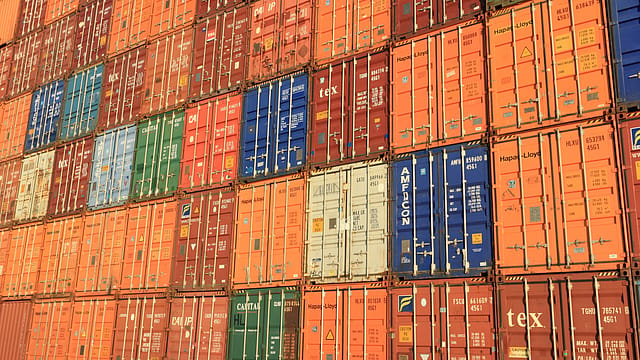Trade wars and India’s global position
ADVERTISEMENT

History suggests that no one wins a trade war, and lessons explain a clamour for creating a more inclusive world. Even developed countries are sensitive on issues of their national interests, as in the case of India. This is due to growth strategies which have resulted in high unemployment and huge disparities between countries; and within countries. Dissatisfaction on growth strategies pursued by nations has led to a rise of protectionism and anti-globalisation sentiments, leading to Brexit, and similar right-wing sentiments in other countries.
Initiatives by one country to protect domestic interests and create jobs could act as a protectionist measure for others. For instance, India has been hit hard by the protectionist policies on visa regulations adopted by the U.S. for protecting jobs and labour rights. It is a deterrent to the flow of professionals from India, with a significant impact on the IT industry’s growth. Similarly, like other nations, India is adversely affected by recent measures adopted by the “Trump Administration”. Since the measures are viewed as hostile, the economic jargon swiftly shifted from “the U.S.” to the “Trump Administration”. Trade tariffs imposed on steel and aluminium, with announcement on slapping sanctions on Iran, has raised global uncertainties.
On the domestic and diplomatic fronts, India is under pressure to retaliate and take harsher steps in line with the European Union (EU) and China. Though politically it is a challenge to adopt policies that are perceived to be friendly by the domestic audience and international friends, India’s position in world trade negotiations has improved, though it needs strengthening. Unlike China, India cannot resort to “taking off the gloves” approach. Largely because India is a potential market for contenders, there is rapid economic growth and growing support from coalitions with like-minded nations. India’s current trade is dominated with three partners: China, the U.S., and the EU. The U.S. is India’s second-largest trading partner, with a total trade of $74.4 billion in 2017-18.
December 2025
The annual Fortune 500 India list, the definitive compendium of corporate performance, is out. This year, the cumulative revenue of the Fortune 500 India companies has breached $2 trillion for the first time. Plus, find out which are the Best B-schools in India.
So what should be India’s approach? It’s in a tricky situation, grappling with domestic and international economic challenges, rising oil prices, pressure on currency, the U.S. and the U.K. imposing discriminatory and restrictive visa regulations (contrary to commitments made to Prime Minister Narendra Modi during his visits), the U.S.’ monetary stance on foreign institutional investors, and most importantly, forthcoming national elections.
India’s modest numbers in steel and aluminium trade with the U.S. would not earn it a position at the negotiating table; neither would India pursue a full-scale WTO battle. The impact of recent trade tariffs on steel exports to the U.S. is minuscule, given that in 2017-18, its iron and steel exports were at $372 million, and aluminium was $680 million. Nevertheless, India has retaliated by imposing a high tariff on Harley-Davidson motorcycles, as opposed to its recent move to slash customs duty on high-end brands to 50%. The impact to the EU on luxury cars, wines, spirits, and leather goods—expected to be targeted by the U.S. administration in the second round—is of a different magnitude.
Recent measures have definitely exposed India to global vulnerabilities; more so as an emerging economy, and perhaps, it is our comparative advantage which can mitigate the risk. Though India has made strides in the past decade, its position at WTO remains conservative. National interests (rightly so) have guided our negotiating position. However, we seem to have got a bit carried away with our growth trajectory, and in the process ignored trade agreements. In past few years, India has been non-committal on both the bilateral and multilateral trade front. It has made tardy progress to initiate free trade agreements with developed countries. It’s been a decade, and the India-EU
Broad-based Trade & Investment Agreement (BTIA) is not near. Though we are trying to strengthen our ties with the neighbouring partners, but gains seem out of sight. Not seeking amendments to, or blocking the ministerial declaration at the WTO’s Nairobi round in 2015, has sent confusing signals on our country’s stance.
India’s approach at the WTO has been branded a hardliner with a “defensive strategy”. Its approach to coalitions to garner greater bargaining power and safeguard its interests in the negotiations has barely yielded any dividends. India expends disproportionate energy in pursuing objectives, only to assert its position as a leader of the developing world. Has India gained as much it has invested, or anticipated? Perhaps it’s an opportune time to evaluate its past approach and perhaps change track to adopt a more cautious approach in the negotiations to create a level playing field. True, we need to enhance competitiveness of the domestic industry and promote flagship progress, such as Make in India. Equally important is to balance the interests of our trading partners, as an all-out trade war is a zero-sum game. It’s important to recognise our bargaining clout, instead of finding ourselves in the middle of burgeoning trade wars; and instead become a role model for cooperation, not confrontation. Perhaps, it’s time to articulate a time-bound strategy on free-trade agreements by concluding the Regional Comprehensive Economic Partnership followed by the India-EU BTIA.
( Views expressed are personal. )
Butani is a partner with law firm BMR Legal, and Satija is a consultant with Indian Council for Research on International Economic Relations .
